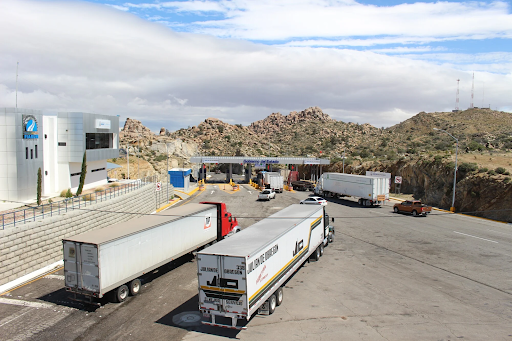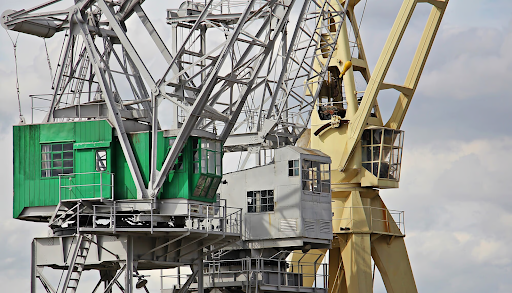Transportation Solutions in the Supply Chain: 4 Tips for a Productive Business
Transportation Solutions in the Supply Chain: 4 Tips for a Productive Business
In the intricate dance of supply chain logistics, transportation strategies stand as the conductor, orchestrating the smooth movement of goods from production to the eager hands of consumers. But, as the global market evolves, so do the challenges faced by businesses aiming to keep their supply chains productive and profitable. This blog post seeks to untangle the complexities of transportation in the supply chain, offering an in-depth exploration of solutions to common challenges, and invaluable tips for businesses striving to optimize their operations.

Understanding Transportation in the Supply Chain
The supply chain is a system of organizations, people, activities, information, and resources involved in moving a product or service from suppliers to end consumers. Transportation, therefore, is the physical link that connects these units, ensuring the flow of goods across various stages of the chain.
Definition and Significance
As the movement of goods is a necessary element of the supply chain, transportation serves as a vital conduit. It encompasses multiple modes—road, rail, air, sea, and more—and involves strategic decision-making to minimize costs while maximizing speed and reliability.
Key Stakeholders and Their Roles
Within the transportation pipeline, various stakeholders—shippers, carriers, suppliers, manufacturers, and logistics providers—assume roles that contribute to its efficacy. Understanding these roles is pivotal to improving collaboration and achieving optimal results.
Common Transportation Challenges
The modern transportation landscape in the supply chain is fraught with challenges that can disrupt even the most well-orchestrated operations. Identifying and preparing for these challenges is the first step towards effective management.
Capacity Constraints
The global economy’s growth leads to increased demand for transportation, often putting pressure on available capacities. This can result in delays, increased costs, and difficulties in securing optimal routes and space for goods.
Rising Fuel Costs
Global energy markets are notoriously volatile, causing unpredictable fluctuations in fuel prices. As a significant component of transportation costs, fuel expenses directly impact the bottom line for businesses.
Regulatory Compliance
Stringent regulations governing transportation, such as driver hours, emissions standards, and safety protocols, can lead to compliance challenges. Non-compliance not only poses risks to the business but can also result in significant delays and penalties.
Transportation Solutions for a Productive Business
In the face of these challenges, innovative solutions have emerged, transforming transportation from a potential bottleneck to a source of competitive advantage. Let’s explore a few such solutions.
Efficient Route Planning and Optimization
Sophisticated route planning software can help businesses navigate the complex web of transportation. By considering factors like traffic, weather, and delivery schedules, each journey becomes a meticulously choreographed ballet of efficiency.
Utilizing Technology for Real-Time Tracking and Visibility
The integration of advanced tracking technologies provides real-time visibility into the movement of goods. This transparency not only allows for better customer service but also facilitates proactive decision-making in the event of unforeseen circumstances.
Collaborating with Logistics Partners and Carriers
Strong partnerships with carriers and logistics providers foster a culture of collaboration. Together, businesses can work towards shared goals, such as improving shipping times and reducing costs, through shared technology and data-driven approaches. And, checking what types of services specialists at Adexin and other similar pros offer can provide businesses with ideas on how to better collaborate. That way, supply chain managers aren’t just reliant on their own ideas, and instead can learn from other professionals.
Implementing Sustainable Transportation Practices
In an age where environmental concerns are at the forefront of public discourse, adopting sustainable transportation practices becomes both a moral imperative and a strategic differentiator. Choosing eco-friendly modes of transportation or optimizing routes to reduce carbon footprints not only benefits the planet but also the company’s reputation and brand image.
Tips for Successful Transportation Management
To truly master transportation within the supply chain and drive productivity, it is necessary to go beyond just implementing solutions. Here are strategic tips that can consistently improve your transportation management.
1. Conducting Regular Performance Evaluations
Regular evaluations of transportation processes allow for the identification of bottlenecks and inefficiencies. These findings can then be used to implement targeted improvements, making the transportation system more resilient and adaptable.
2. Building Strong Relationships with Suppliers and Customers
Strong relationships with suppliers and customers lead to better coordination and mutual support. When the entire supply chain works as a cohesive unit, transportation becomes a strategic asset that enhances the business’s overall value proposition.
3. Continuously Monitoring and Analyzing Data
Data is the lifeblood of modern transportation management. By continuously monitoring and analyzing transportation data, businesses can gain insights into performance, trends, and potential areas for improvement, driving informed strategies and decision-making.
4. Embracing Innovation and Staying Updated with Industry Trends
In an industry as dynamic as transportation, staying ahead requires a mindset of continuous innovation and a keen eye on emerging trends. Whether it’s the adoption of new technologies or the incorporation of industry best practices, a commitment to innovation is a commitment to success.

The realm of transportation solutions in the supply chain is vast and ever-evolving. Understanding the significance of transportation in the supply chain, recognizing common challenges, and implementing the solutions and management tips outlined in this post can help businesses fortify their operations and achieve a new level of productivity.
As the global marketplace becomes increasingly interconnected, transportation stands at the crossroads of entrepreneurial opportunity. Those businesses that grasp the magnitude of this function and actively seek to master it will not only overcome industry challenges but will also carve the path to a more prosperous future.

 in Melbourne
in Melbourne 
 Employee Screen Monitoring Software
Employee Screen Monitoring Software App and Website Monitoring Software
App and Website Monitoring Software Time and Attendance Software
Time and Attendance Software Finance
Finance Banking
Banking Healthcare
Healthcare Lawyers
Lawyers Retail & ecommerce
Retail & ecommerce Knowledge base
Knowledge base Blogs
Blogs Installation Guide
Installation Guide FAQs
FAQs About
About Media Kit
Media Kit Contact us
Contact us